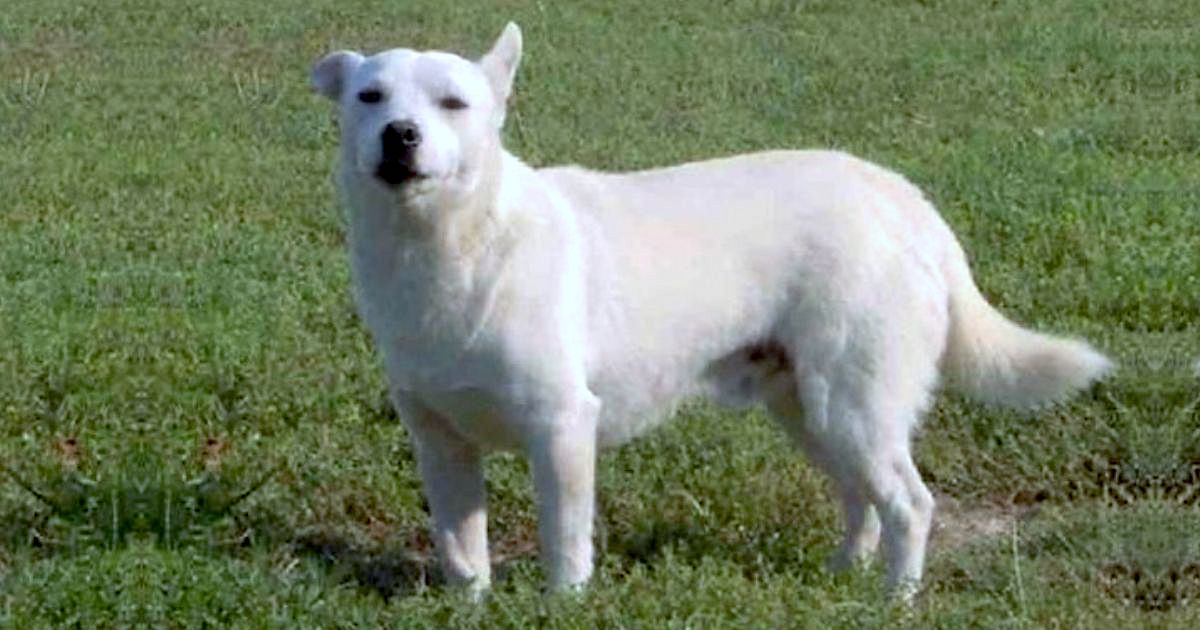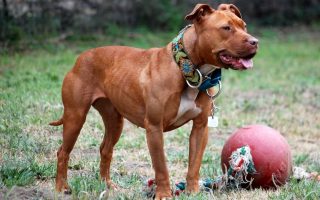Originating from the streets of Greece where they learned how to survive and thrive, the Alopekis dog breed is a companion with many skills and different lovely qualities.
These dogs have been in existence for quite some time and still brighten the world of their owners with their devotion, friendliness, and beauty.
This article presents comprehensive Alopekis dog breed information, interesting facts, characteristics, temperament, behavior, health, training, care needs, and more.
Far from being wild stray dogs who’d frustrate you, the Alopekis make dog ownership worth it.
Like other dog breeds, the Alopekis have needs and some challenges.
As miniature dogs who happen to be workers, they require a home that can handle both their size and their love for activities.
While they aren’t as challenging as some other small dogs, they certainly need attention, good training, the right environment, rich nutrients, and love.
Though they appeal to a large number of owners, they may not be everyone’s cup of tea.
Key Alopekis Dog Breed Information
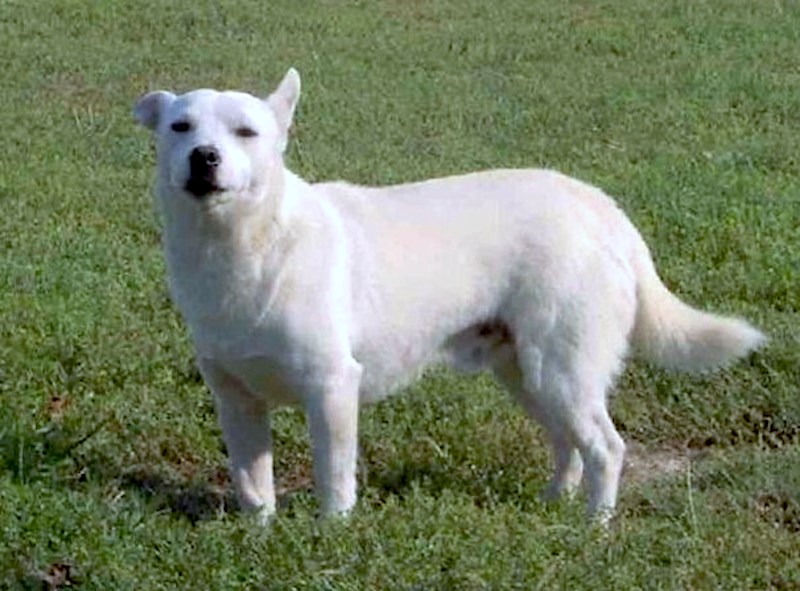
| Dog Breed Group | Working |
| Height | 9 to 13 inches |
| Weight | 7 to 18 pounds |
| Coat | Wiry |
| Color(s) | Black, blue, brown, cream, gold, white |
| Life Expectancy | 14 – 16 years |
| Temperament / Behavior | Alert, courageous, friendly, intelligent, lively, loving |
| Origin | Greece |
| Bred For | Ratting |
| Nickname(s) / Other Name(s) | Alopecis, Bobis, Moropa, Boboudi |
| Recognized by the AKC, UKC, ANKC, CKC | No |
Alopekis Characteristics
| Characteristics | Rating |
|---|---|
| Adaptability | 4/5 |
| Friendliness | 4/5 |
| Kid-Friendly | 4/5 |
| Pet-Friendly | 4/5 |
| General Health | 4/5 |
| Grooming Needs | 2/5 |
| Trainability | 4/5 |
| Intelligence | 3/5 |
| Playfulness | 3/5 |
| Exercise Needs | 3/5 |
| Energy Level | 3/5 |
| Tendency to Bark | 3/5 |
| Tendency to Drool | 1/5 |
| Tendency to Snore | 1/5 |
| Tendency to Dig | 1/5 |
Interesting facts about Alopekis Dog Breed
Fact #1: Alopekis is good for first-time owners
New pet parents often have a harder time getting a breed that’s suitable for them.
Because they have no experience in training a dog, they have a smaller pool to choose from.
A lot of dog breeds will be too much for a novice to handle, so their choice must be intentional.
If you have never owned a dog before, here’s some good news. The Alopekis is a good first-time dog. They are eager to please, easy to train, and friendly.
They don’t have a dominant streak but would rather derive joy from obeying you.
Fact #2: They were bred to be ratters
In their early days of history, the Alopekis hunt down rats and kept the house free of vermin.
Though it is a job often associated with cats, there are many dog ratters. The Alopekis is one of them.
If your house has a vermin problem, the Alopekis could be your best solution.
However, this means you should be careful if you have a rodent as a pet. Without proper socialization, the Alopekis won’t be able to tell the difference.
Fact #3: No Kennel Club recognizes them
Though they are one of the world’s oldest breeds and have been in existence for a long time, they have not been recognized by any Kennel Club, including the American Kennel Club and United Kennel Club.
The sad part about this is that they have a lot of beautiful qualities worthy of recognition.
Hopefully, a Kennel Club would pick up on it and give them the acknowledgment they deserve.
Fact #4: They adapt to different environments
A benefit of the Alopekis is that they adapt to any living condition and be comfortable.
Though they prefer the outdoors, once they’ve got their share of exercise they are comfortable staying indoors and will remain inactive.
They can stay in a rural setting and survive in an urban city with no glitches. This makes them a favorite companion for many people.
Fact #5: They make good watchdogs
Despite their size, the Alopekis are territorial dogs with strong alertness. They love to protect their families and would always be on the lookout for intruders.
With their intelligence and loyalty, they don’t get tired of ensuring your property is safe.
Though they are not aggressive, the Alopekis is brave. If his family is facing danger, he’d defend them. He can battle foes bigger than him with no hesitation.
Alopekis History & Origin
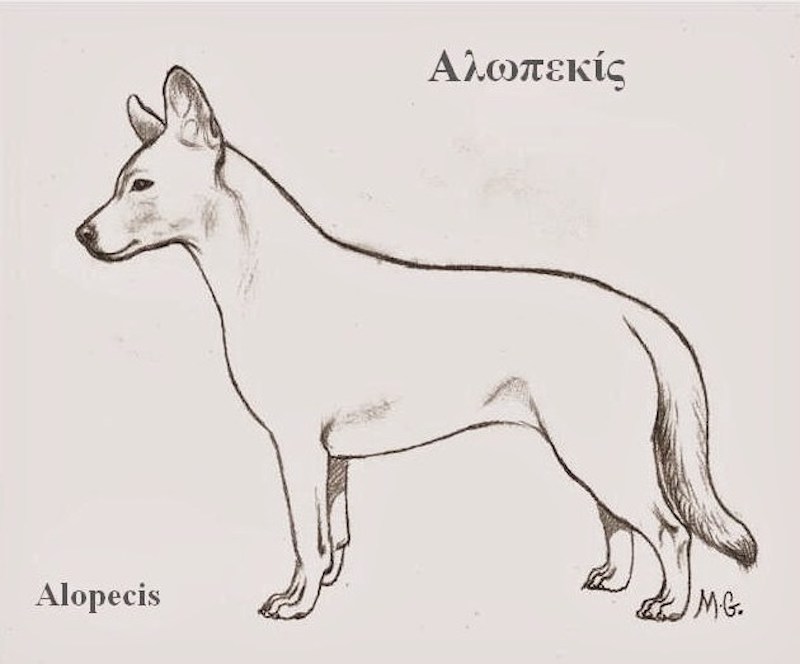
The Alopekis originated in Greece and have some controversies surrounding their breed status.
While one party argues that the Alopekis is a pure breed, the other side points out that it is a type, not a breed.
The Alaskan Husky faces this controversy, too. Far from being recognized as a breed, the Alaskan Husky is a category of sledding dogs known for their speed.
In the same way, some argue that the Alopekis is a category of street Greek dogs.
The name Alopekis is derived from the Greek word ‘alopecis’ which means ‘small and fox like’. Many street dogs in Greece of old have these features.
On the streets, it was survival of the fittest for these dogs. Only the strong could pass down their genes.
Far from humans breeding the Alopekis, they must have continued existing due to natural selection.
Like many other old dogs, the early days of the Alopekis are blurry. Several theories have been propounded to fill up the gap, but they haven’t been enough.
One such theory is that the Alopekis have lived with the Greeks for centuries.
Some old artifacts depicted small dogs that seemed to be the ancestors of the Alopekis. However, one can never be too sure.
The Alopekis were largely ignored for years, despite the fact that they are some of the oldest dogs.
The first time people ever thought of rediscovering them, it was as sheepdogs, not the street dogs they were.
Improvements came in this area when some dog enthusiasts researched some miniature Greek dogs who lived in homes.
They were collectively called the ‘Meliteo Kinidio’. This dog type and the Alopekis were believed to be the same, up until the 20th century.
Unfortunately, the Alopekis is not recognized by any Kennel Club.
Alopekis Temperament, Behavior & Intelligence
Going from the streets into people’s homes, the Alopekis has gotten comfy in the hearts of dog lovers.
Their loyalty, liveliness, courage, and devotion make more people open their doors to take them in as pets.
With the ability to adapt to different environments, they give you one less problem when you acquire them.
With enough exercise, they can cope indoors. In the countryside, they’d thrive. This adaptability is one of their top qualities.
The Alopekis may be small, but they are hard workers. Their size doesn’t deter them from doing what they need to survive.
There’s a phrase used to describe the Alopekis: “multum in parvo” which means ‘much in little.’
An Alopekis should be named Jack because he is a jack of all trades.
To the farmer, he can be a herder of ducks and geese. He’s an expert in vermin control and can accompany a hunter to capture small prey.
In a household, he’s a good companion. He’d keep an adult company and be protective of the kids.
He’s also a good watchdog, on the alert, never missing a thing. You’d know if something is amiss or someone strange is approaching with the Alopekis.
Alopekis are eager to please and easy to train, traits that make them suitable for novice owners.
You won’t also waste so much time training them as they respond quickly.
However, they shouldn’t be spoilt or overindulged. Don’t let their cuteness and friendly nature deter you, these dogs can become unruly if they are not well trained.
Like other dogs, you need to be firm when training them and strict with regulations. Punishments and harsh treatments are not necessary, though.
The Alopekis is a fun addition to a family and one you should consider if you love small, cute dogs.
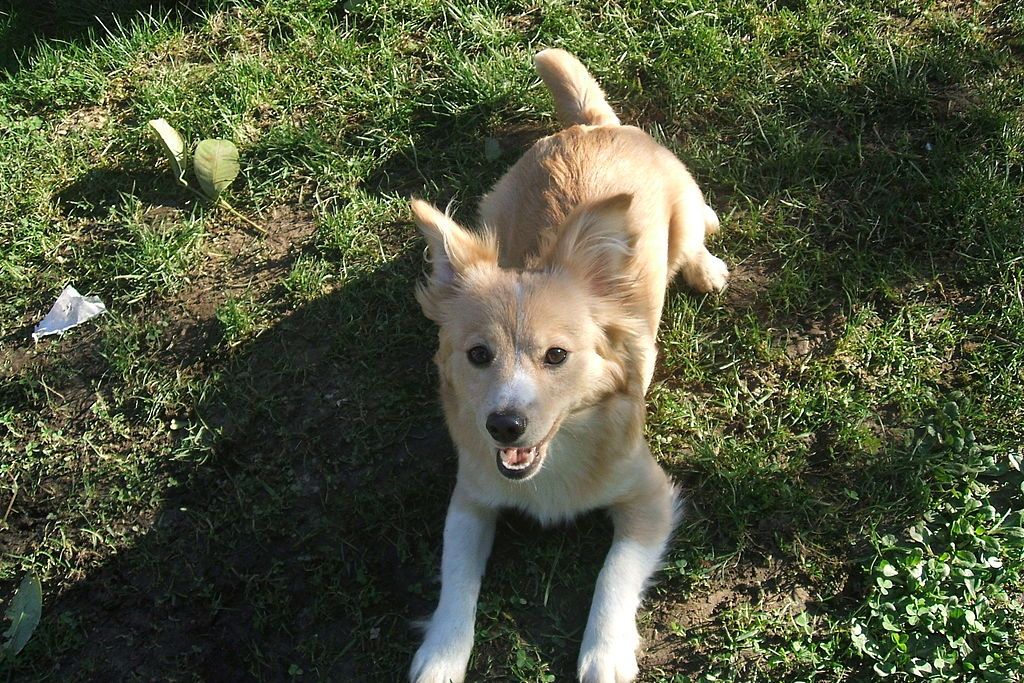
Are Alopekis good family dogs?
Alopekis are playful, friendly, and devoted to family members. They are workers, ratters, watchdogs, and even herders. There are many qualities in these small dogs.
In a household, they remain affectionate and loving. They are adaptable and can live anywhere when some conditions are met.
This means you don’t have to worry about the environment when considering an Alopekis dog. Whether you have a big yard or a flat in an apartment building, the Alopekis isn’t choosy.
He is, however, mischievous with an independent streak. Though new pet parents can handle them because they are trainable, they need an alpha leader to curtail behavioral problems.
As small dogs, they are susceptible to small dog syndrome, something you should prevent.
That being said, they make good family dogs who delight their owners and are eager to please.
Are Alopekis good with kids?
Alopekis score high in kid-friendliness. Just as they are protective of adults, they look out for children in the household.
They are good companions of kids and may be inclined to follow them everywhere, including school. They have a babysitter trait.
However, supervise whatever interactions your kid has with an Alopekis, especially when your child is young.
The Alopekis don’t appreciate the rough play and may react if roughly handled.
5-year-olds haven’t really grasped dog boundaries and may not know their limits. Thus, an ‘accident’ can happen if you leave your child with an Alopekis unsupervised.
Before you get an Alopekis, your children ought to know how to handle a small dog.
Habits like yanking ears and pulling tails shouldn’t be tolerated. They should equally know how to give a dog some space when he’s eating or asleep
Are Alopekis good with other dogs and pets?
The Alopekis can co-exist with other dogs when properly trained. They tend not to be aggressive and can get along with their other dog, especially the one they were raised with.
Training is also required with other pets like cats, so the Alopekis will take them as pack members. They are not suitable for homes with rodents as pets.
Male vs Female Alopekis Dog
For every dog breed, we have two separate genders, much like humans and many other animals. To make a proper pet choice, consider the gender differences.
For some breeds, the differences are subtle and limited to one aspect of their characteristics (like size or temperament).
Some other breeds are dimorphic. You can tell the difference between genders by looking at them.
While the Alopekis Male and Female are not dimorphic, they have a few differences. While these differences may influence your decision, they don’t stand out.
To begin with, though they are both small dogs, the male is bigger. Male Alopekis weigh 8 to 18 pounds with a height of 10 to 13 inches. The female Alopekis weigh 7 to 17 pounds with a height of 9 to 12 inches.
Another subtle difference is their genitals. Like a lot of living beings, the male genitals is external and can be seen if you turn your dog over.
The female’s is hidden with reproductive quality. If you want to breed Alopekis puppies, the female is your best choice.
What if you want to spay or neuter your pet?
For those who may not be aware, spaying and neutering a pet involves the removal of organs through surgical means. It is legal and comes with its benefits.
However, it is not 100% perfect as it has its downsides. Seek expert advice before proceeding.
Overall, gender is a matter of preference, especially with breeds like the Alopekis.
Caring for an Alopekis
As a small dog, Alopekis needs food fit for his size. Without a solid, healthy diet, your dog’s health is at risk.
Take their age, weight, and individual preferences into account while feeding them.
The puppy should not be fed like an adult, and as a dog gets to his last days, he needs some specific nutrients to survive.
An Alopekis who’s overweight should not be served the same ration as one who’s lean. Individuality matters as well.
Their size notwithstanding, Alopekis are versatile workers. This means they need both mental and physical activities to be satisfied.
They are not lazy dogs who would crash on the carpet and have to be pushed to put on a leash.
Having said that, their energy level is moderate, so is their exercise need.
This is good if you’re not a hyperactive person as you won’t get drained by the Alopekis’ exercise needs.
Age matters a lot when exercising your Alopekis. Also, be creative to avoid boredom.
The Alopekis are trainable, and it is much easier to get them to obey than many other breeds.
They are intelligent, eager to please dogs who understand instructions and execute with ease. You won’t need too many repetitions.
However, they have an independent streak and need you to be the alpha of the pack.
Without firmness on your part, they’d develop some crazy habits like running out of the house or becoming aggressive.
Alopekis need to be clean and presentable. That’s made possible with grooming. Fortunately, their grooming needs are not high and they are easy to maintain.
They also need to stay healthy. Though you won’t have to frequently visit the veterinarian because the Alopekis boast of good health, regular checkups are necessary.
Alopekis Food and Diet
As we mentioned earlier, a dog needs food. This is an obvious truth as humans need food as well.
The Alopekis meal should be tallied to their size. Be intentional about what you scoop into their bowl.
Make sure the Alopekis get a rich diet as this would be beneficial. A healthy meal makes a healthy dog.
There are nutrients an Alopekis shouldn’t do without and there are some you should avoid.
Our feeding guideline is generic to this dog type and does not cover every individual Alopekis need.
While it will help you understand what your pet needs, remember that he may have his own feeding requirement.
With personal observations and counsel from a veterinarian or nutritionist, you will know exactly what your Alopekis need.
The adult Alopekis need about 2 to 3 cups of dry or wet food. Take note of their weight and avoid overfeeding them.
Obesity comes with a lot of problems, especially for a small dog. The best nutrients for an Alopekis include protein, calcium, and fatty acids.
As puppies, make sure their meal isn’t human food or one reserved for adults.
They need puppy food filled with a lot of protein for growth, calcium for strengthening their bones, etc.
Senior Alopekis is at the sunset years of their lives. They tend not to move around as much as younger ones, so you should feed them with that in mind.
Alopekis Exercise
Alopekis have an average exercise need and are content with short walks on weekdays and longer ones on weekends.
However, that they don’t have a high exercise need doesn’t mean they can do without it.
Alopekis is a worker who needs to be mobile. He may get antsy and unrested if you neglect to exercise him.
A stroll to a dog park is a good example of an activity the Alopekis would enjoy.
It kills two birds with one stone because you get to exercise your Alopekis and socialize him.
Let him be on a leash while outdoors as he has hunting instincts and may want to dive after prey.
Alopekis like playing in a yard as well. Get them toys and enough space to play in. Once exercised, they adapt to indoors.
If you live in an apartment with no yard, that trip to the park works wonders. Spice things up with some other physical and mental activities that would make the experience fun.
A game of fetch, frisbee, puzzle games or a ball game is a great activity.
If Alopekis adults have an average exercise need, puppies should go lower. Intense activities are especially damaging for a small puppy like the Alopekis.A simple play with toys is right for the puppy.
Senior Alopekis need to keep their weight in check and prevent age-induced problems like arthritis. Thus, they need a little exercise to maintain their weight and health.
The Alopekis is a delight to train. Anyone can attempt this, regardless of experience.
They are playful, intelligent, and obedient, a lovely combination that makes for a memorable training experience.
This doesn’t mean you should be lax with them. As with any other dog, Alopekis need a firm owner.
They’re not intimidating so it is easy to be confident around them, even if it’s your first time.
A laissez-faire owner would not give the Alopekis that alpha leadership he needs, prompting him to try taking over. He also risks developing small dog syndrome.
Small dog syndrome is bad behavior Alopekis display that is often overlooked by owners.
It’s almost like a parent who gives their last kid a pass each time said kid does something wrong.
The simple way to correct this is by treating all dogs the same. If, for example, you scold a big dog for barking at strangers, do the same to a smaller dog.
Set the training foundation when the Alopekis is still a puppy for a better experience. At a young age, he’s like a blank canvas, ready for you to paint. Ensure your end result is a masterpiece.
While the Alopekis is a puppy, set yourself as the alpha leader. As we’ve mentioned, this won’t be difficult. With a few rules and steps, he’d pick up on the cues.
Some training you can give your Alopekis include obedience training, house training, socialisation, and rate training.
Alopekis Grooming Needs
Alopekis have a low maintenance need because of their coat and size. Both the Alopekis with short hair and those with longer hair are easy to groom.
Their shedding tendencies range from moderate to none.
For the short-haired Alopekis, brush them once a week to keep the hair arranged.
For the long-haired Alopekis, more is needed. In addition to brushing, mat the hair and clean it regularly.
Take care of every other part of their little body. Give their teeth a good brush with toothpaste and toothbrush approved by your veterinarian.
Those small ears should be wiped clean with a cotton ball and ear cleaner which should be approved. No other object should go into the ears as they may cause injuries.
Trim their nails too before they get long and uncomfortable. With a small dog like the Alopekis, be extra careful so you won’t injure your pet while trimming. If you don’t have experience, hire someone who can.
While brushing, trimming, matting and cleaning, be observant. You may detect signs of infection, injury, or illness. Do the needful and keep them healthy.
Alopekis Health Conditions
Due to natural selection and survival of the fittest in the old streets of Greece, the Alopekis is a healthy breed.
They live long and have no medical condition tied to their genes. This is a big bonus to you as an owner because you don’t have to deal with illnesses most dogs are prone to.
What you should do to your Alopekis is take care of him. While he may not be prone to illnesses, he can still get injured or have an infection. Regular checkups are necessary.
When well taken care of, you will not have health issues with the Alopekis
Frequently Asked Questions
What are Alopekis dog breeds known for?
In history, Alopekis were stray dogs who were employed as ratters, an activity they are still known for today.
They were also hunters and herders of small farm animals like ducks. They make good watchdogs as well.
How do Alopekis dogs get?
An Alopekis is a small dog type who can be a lapdog. When fully grown, they weigh 7 to 18 pounds with a height of 9 to 13 inches.
Do Alopekis like to cuddle?
Though Alopekis prefer the outdoors, they can cope indoors when their exercise needs are met. They’re small and can fit on your laps for a good cuddle.
Is it hard to take care of an Alopekis?
Alopekis are low-maintenance dogs with average energy, moderate shedding tendencies, and good health. They are also easy to train. It isn’t hard to take care of an Alopekis.
How long do Alopekis live?
Alopekis have a long life span with good genes, one of the best there is. On average, they can live up to 16 years. Some are known to live much longer.
How much do Alopekis puppy cost?
Alopekis are not as expensive as other dog breeds, but they are not cheap either. Check your wallet to be sure you can afford an Alopekis before considering him. A puppy costs between $300 to $500.
Do Alopekis shed?
Alopekis are moderate shedders. Sometimes, they don’t shed at all. With some brushing, you’d keep them trimmed when they shed.
Is an Alopekis right for you?
A healthy, playful, and devoted dog type, the Alopekis is a dog fit for family living. He gets along with kids and adults, plays different roles, and can adapt to many environments.
He’s also suitable for different owners and easy to train. Of course, Alopekis have their challenges. However, compared to many other breeds, they are easier to maintain.
This dog is right for you if you want a pleasant pet experience.
Final Thoughts
Alopekis is a dog type that’s for almost everyone. With their adaptability, intelligence and trainability, they are suitable for a vast majority of people.
If you are one of them, you will find in the Alopekis a playful, dutiful companion that will make your life fun.
Getting a pet is a big decision, but one with so many benefits, they are worth the risks involved.
Whatever breed you decide to get as a pet, the important thing is to work on taking care of your beloved furry. That’s what being a pet parent is about.
If you enjoyed this article on Alopekis facts and dog breed information, do explore other canines in this Complete Alphabetical List of Dog Breeds.

